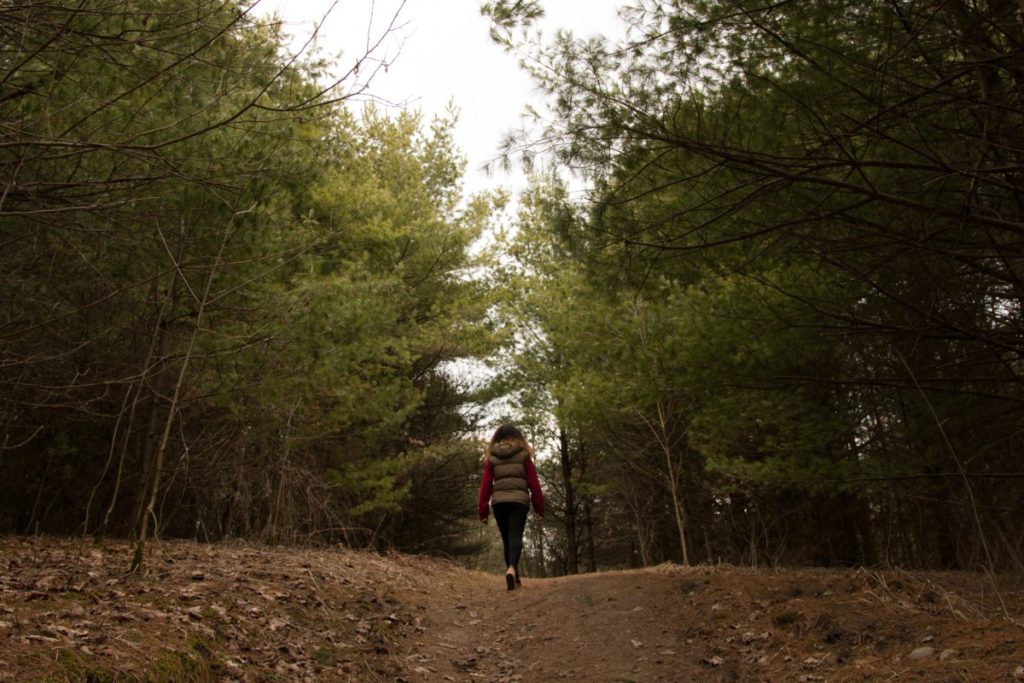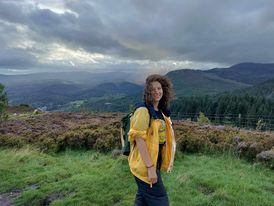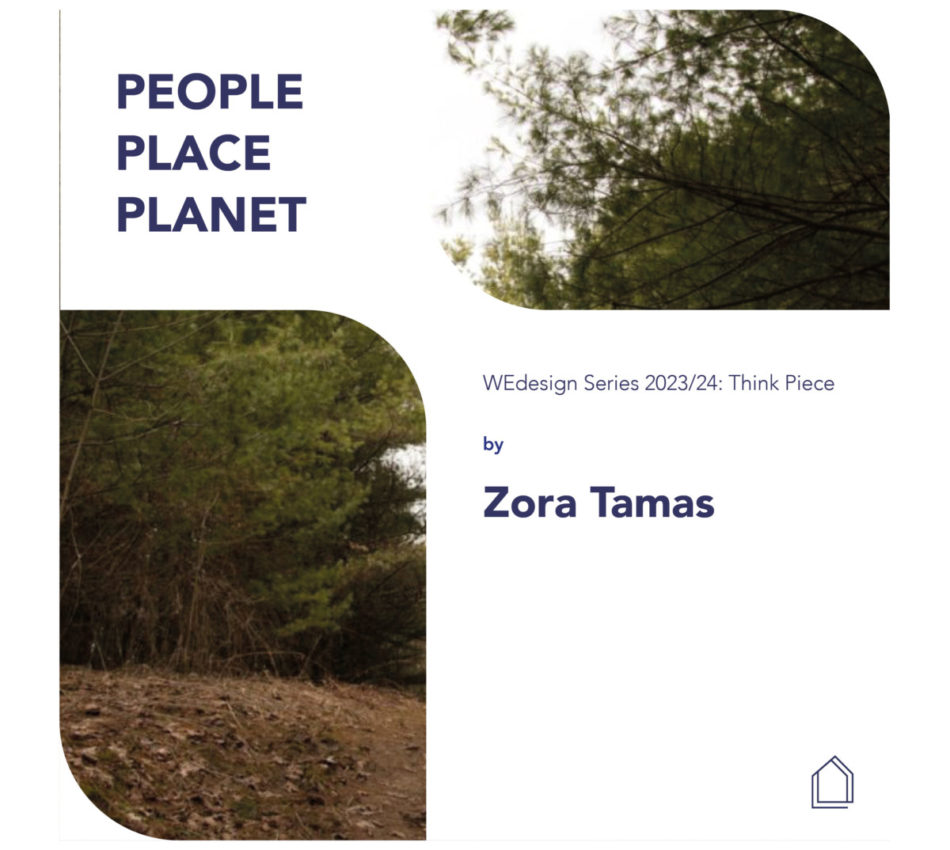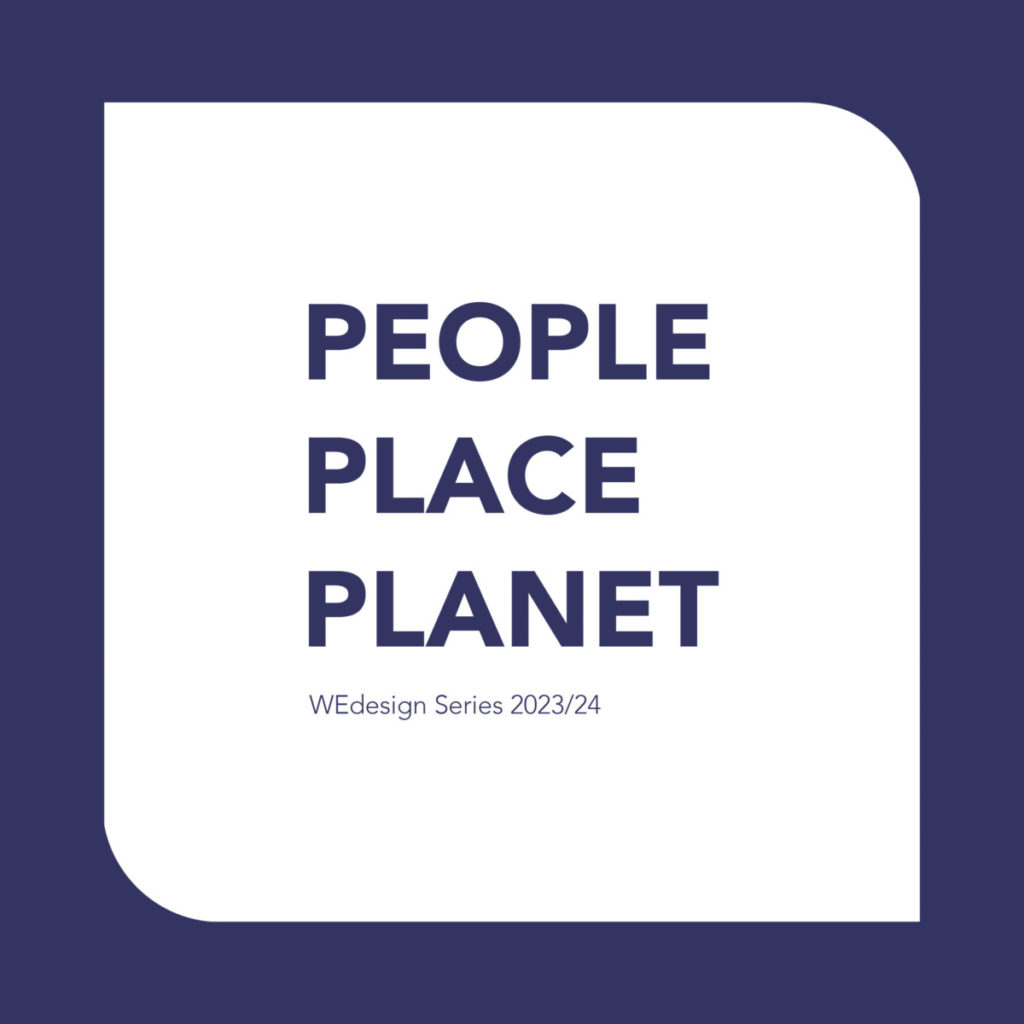Written by:
People, Place, Planet: Think Pieces, are a series of online blogs which will take our event series theme as a starting point and will offer an external voice and provocation.
In this edition of our People, Place, Planet: Think Pieces, Zora Tamas explores People, Place, Planet and the concept of ‘outside’.
Outside is inside
There’s no such thing as “outside”. We can’t throw anything “out”. Once something is created, it will stay on this planet forever. I want people to feel a similar sense of ownership over public spaces that they feel towards their homes, their sanctuaries, which they shape to their comfort, keep tidy and fill with love. The concept of “inside” may help us feel safe and in control, but the concept of “outside” has been very damaging for our perspective of and relationship with nature.
The environment and wildlife always came first to me. However, with time I came to realise that this was far from universal. I’ve been encouraging people to connect with nature since I’ve been a teenager to try to change this.

As a play ranger, I was told to encourage young people to spend their free time playing and socialising in public spaces. This is easier said than done. You can build the most amazing playground in town, but children won’t use it on their own if they need to cross a busy street to get there or if they don’t feel comfortable in it. Did anyone ask the children where they would like to play or what they wanted in the space created for them? Did anyone give a single hammer or paint brush to any local child to contribute to the space, to develop a deeper connection with it? Does the space encourage people to play near trees, bushes, flowers, insects, to collect berries, or to make bracelets out of grass? I think you can see where I’m going with this.
As play rangers, we went where our target audience lived and played, and brought loose parts. Children created swings, climbing structures, slides, hammocks, art, costumes, and obstacle courses, all using loose parts. Friendships were made, emotions were owned, and, in the process, they connected with the environment right on their doorstep. And after we left, they kept playing and learning. Children and young people had agency in deciding how the space near their homes was used. This all went well until the pandemic hit in 2020.

When the pandemic hit, we all went “inside”. Schooling, work, and leisure became increasingly centred on “indoors” for many. Even though lots of people started to gain a new appreciation for nature they could access within the limits of lockdown, “inside” was still something we had to return to.
How do we expect people to respect the environment if they feel separate from it? This isn’t just a matter of “inside” or “outside”, it’s part of viewing ourselves as separate from nature. These dichotomies simply reinforce each other. We can see this in the ways that people litter and continue to disregard the impact of any of their actions on their planet, our shared home.
When I started working in a children’s garden, I thought these children would look after this space since they used it every day for playing, gardening, and even during snack time, sometimes eating what they’ve grown there. I was surprised to see that it still wasn’t the case. I picked up litter in the garden regularly and encouraged the children to join me with minimal success. They still saw it as separate from their world. However, when we started planting flower seeds, they started nurturing the young plants. This was a huge win. They began their journey towards forming a deeper connection with nature, to really care for it.
I currently work for the Nextdoor Nature programme, which supports individuals all over the country to connect communities with local green spaces and improve them for people and wildlife. Nature does everything a good neighbour would. It lets us visit any time we want and gives us gifts such as raspberries, the sight of a deer, and opportunities to play, exercise, and socialise. And how do we repay this welcoming neighbour? With extreme weather conditions, animals trapped in plastic, and toxic air, soil, and water. We need to become much better neighbours, and quickly. This programme highlights that everyone can contribute to nature’s recovery. With everyone doing a little, we can achieve a lot. A project, especially a network of projects, is bigger than the sum of its parts. Everyone is key to the solution. We owe it to future generations to protect nature, support its recovery and keep the planet habitable for all.
It only takes humans a few years after birth to learn that all people around them are individuals with different likes and dislikes, emotions, and perceptions of the world. When do we learn this about wildlife? That without nature there’s no medicine, food, clean water and air and many other so called ‘services’ our good neighbour gifts to us? Every action going against the wellbeing of the natural environment wears away the foundation of quality of life. When do we learn that the outdoors isn’t an inanimate background to our lives, that the outdoors is really “inside”?
Nextdoor Nature | Community-led conservation | Scottish Wildlife Trust
About the Author
Zora Tamas

Zora Tamas is currently the Community Engagement Officer for Scottish Wildlife Trust’s Nextdoor Nature Programme. She has previously worked with children and young people in outdoor settings, focusing on free play and environmental education. As a volunteer she has founded and contributed to numerous projects connected to nature conservation, sustainability, and community green spaces.
About the WEdesign 2023/24 Series: People, Place, Planet
People, Place, Planet is our theme for The Glass-House 2023/24 WEdesign series.
As we continue to shape our places, we are faced with the huge challenge of balancing our personal needs, the collective needs of our communities and those of our increasingly fragile planet.
This series will aim to identify and explore the opportunities and synergies that exist when we strive to balance people, place and planet in placemaking.
How can we think differently about how we shape our places? How can we collaborate more through design and placemaking to value and respect people, place and planet equally?
To find out more about the full 2023/24 series, visit our People, Place, Planet page on The Glass-House website.
WEdesign is The Glass-House’s annual series of free interactive public events, held online and in-person in cities across the UK, where we explore collaborative design in placemaking through discussion, debate and playful co-design activities.
To find out more about the WEdesign Programme, visit the WEdesign page on The Glass-House website.
WEdesign is supported by the Ove Arup Foundation.


